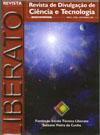A FORMAÇÃO DE ESQUEMAS EMERGENTES SIGNIFICATIVOS COMO FONTE DE COMPREENSÃO LEITORA: UMA ABORDAGEM CONEXIONISTA
Resumo
The present article presents contributions from the connectionist paradigm in order to explain the relation between brain processes and cognitive activities in the field of cognitive science such as emergent brain schemata formation and reading comprehension using computational simulation. Similar to a computer artificial neural network, a reader’s brain processes and stores information along several interconnected units producing generalizations and abstractions working on a parallel distributed process of information. The reader processes the words from a text integrating new information to existing knowledge, setting up new connections. In fact, distributed, fragmented and widespread concepts are used to codify thoughts and personal experiences. Searching for a meaningful synthesis, the engrams are indexed to explicit, implicit and ultraplicit information, which are modified by the use of dynamic ad hoc configurations. Cognitive processes and operations such as cognitive and metacognitive strategies form syntactic, semantic and phonological knowledge are taken from the text itself. Understanding a text means to form a meaningful synthesis when the brain schemata are organized, elaborated and recalled on a visual image of the whole context.Downloads
Como Citar
Edição
Seção
Licença
Declaração de Cessão de Direitos Autorais
, ____ de _____________ de 202X.
Senhora Editora:
Eu/Nós, XXXXX, declaro/ declaramos que o artigo intitulado XXXXXX, submetido à publicação à Revista Liberato é original e de minha/nossa autoria e que as fontes citadas foram explicitadas no corpo do trabalho e nas referências.
Salientamos ainda que seu conteúdo não foi enviado para publicação em outras revistas, seja em formato impresso ou eletrônico, reservados os direitos autorais para a Revista Liberato (Versão Online) – ISSN 2178-8820.
Com esta declaração, concedo/cedemos todos os direitos de divulgação do texto - por mídia impressa, eletrônica ou outra qualquer - à Revista Liberato e à Fundação Escola Técnica Liberato Salzano Vieira da Cunha.
Certificando minha/nossa responsabilidade pelo conteúdo apresentado, subscrevo-me/nos atenciosamente.
Nome (s) do Autor (s) Assinatura



